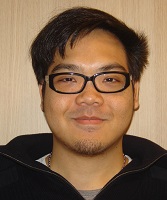Abstract
Silicon Carbide (SiC) is one of the most desirable materials for power electronic devices. The development of the growth process, to achieve larger size and higher quality is on the way. Even if modeling has proved its ability to assist the optimization of the growth processes, there are still some strong issues which are not considered in a satisfactory way. This thesis aims to use the modeling tools to tackle those challenging fundamental and technological issues on both industrially used PVT and emerging TSSG processes.In the PVT process, special attention is paid to the physical chemistry at the solid-vapor interfaces. Especially, we investigated the way to model the stoichiometric crystallization of SiC from a non-congruent vapor as the Hertz-Knudsen model was shown to be not adapted. We thus considered SiC as a solid solution using coupled mass transport modeling and thermodynamics. This approach gives an assessment to the chemistry of the SiC crystal which can be linked to the controllable parameters. Such correlations may serve as a basis to control the points defect density, stable polytypes, and doping concentration. Concerning the TSSG process, the effects of crystal rotation speed and operating frequency are studied. The electromagnetic convection is the main contribution governing the growth process using low frequency while the combined buoyancy and Marangoni convections become dominant at high frequency. In the experimental conditions using low frequency, the crystal growth rate could still be enhanced by increasing the rotation speed. The phase parameter is also introduced using the combined fluid dynamics and analytical modeling. This provides a comprehensive visualization of the interactions between fluid flow and step flow and a guideline to improve the surface morphology of the crystal.Membres du JuryG. Vignoles, LCTS, CNRS, Université Bordeaux 1 - Bordeaux - (Rapporteur)
P.Wellmann, Université d'Erlangen - Nürnberg, Erlangen (Germany) (Rapporteur)
A.Jardy, Université de Lorraine, Nancy , (Examinateur)
T.Duffar, SIMAP, CNRS, Grenoble INP Minatec, France (Examinateur)
E.Blanquet, SIMAP, CNRS, Grenoble INP Minatec, France (Examinateur)
G.Ferro, Université Claude Bernard Lyon 1, France (Examinateur)
D.Chaussende, LMGP, CNRS, Grenoble INP Minatec, France (co-Directeur de thèse)
J.M. Dedulle, LMGP, CNRS, Grenoble INP Minatec, France (Directeur de thèse)
